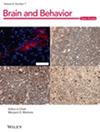Two-Sample Bidirectional Mendelian Randomization Study With Causal Association Between Metabolic Syndrome and Cerebral Aneurysm
Abstract
Background
We used a two-sample mendelian randomization (MR) method to comprehensively investigate the causality of metabolic syndrome (MetS) or its components, including MetS, triglyceride (TG), high-density lipoprotein cholesterol (HDL-C), low-density lipoprotein cholesterol (LDL-C), fasting blood glucose (FBG), waist circumference (WC), and hypertension (HP), with cerebral aneurysm including nonruptured and ruptured aneurysmal subarachnoid hemorrhage (SAH).
Methods
By leveraging large-scale genome-wide association study (GWAS) summary statistics of MetS or its components and cerebral aneurysm (nonruptured and SAH) from European, MR, reverse-direction MR, and sensitivity analysis were utilized to quantify the genetic correlations and causal relationships. In addition, we adjusted for multiple comparisons using the false discovery rate (FDR) correction.
Results
Two-sample MR analysis showed that HP was a risk factor for cerebral aneurysm (nonruptured and SAH) with odds ratio (OR) of 58.959 (95% confidence interval [95% CI] = 12.073–287.920, p < 0.001, q < 0.001), and 32.290 (95% CI = 5.615–185.671, p < 0.001, q < 0.001), respectively. HDL-C (OR = 0.836, 95% CI = 0.728–0.960, p = 0.011, q = 0.039) and FBG (OR = 0.626, 95% CI = 0.426–0.919, p = 0.017, q = 0.039) were negatively correlated with cerebral aneurysm (nonruptured). The HDL-C result was inconsistent after adjusting for TG and LDL-C by multivariable MR analysis. In reverse MR analysis, we found that there was no statistical causal association between cerebral aneurysm (nonruptured) and MetS or its components. Genetic liability to cerebral aneurysm (SAH) was inversely associated with HDL-C and FBG but was not associated with others, however, sensitivity analysis showed that few instrumental variables made a big difference.
Conclusions
Genetically determined elevated FBG level reduces the risk of cerebral aneurysm (nonruptured). However, hypertension increases the risk of cerebral aneurysm (nonruptured and SAH).


 求助内容:
求助内容: 应助结果提醒方式:
应助结果提醒方式:


